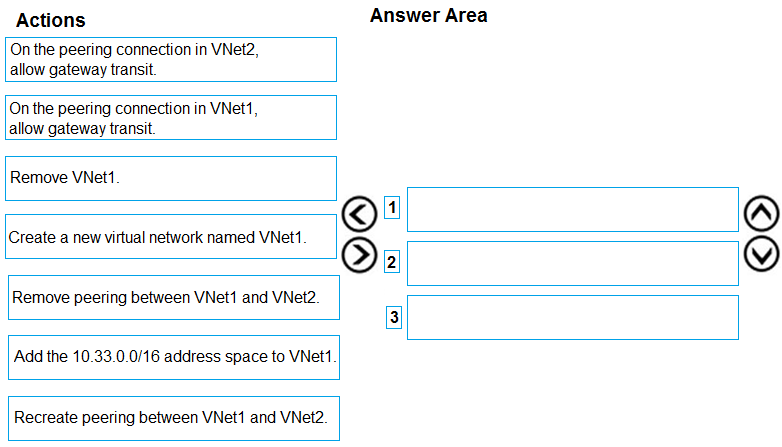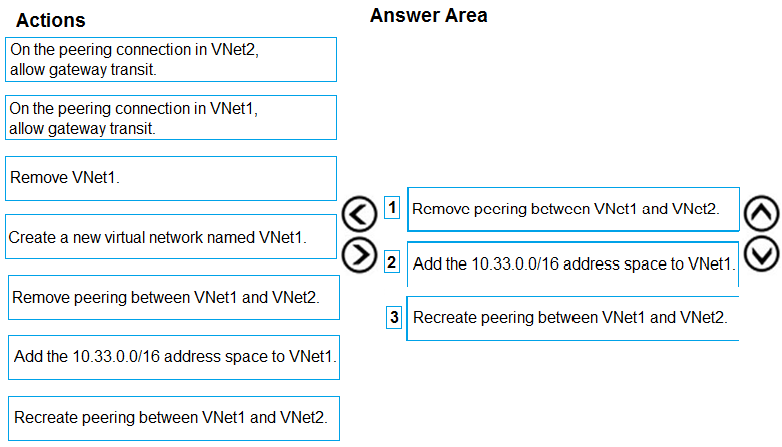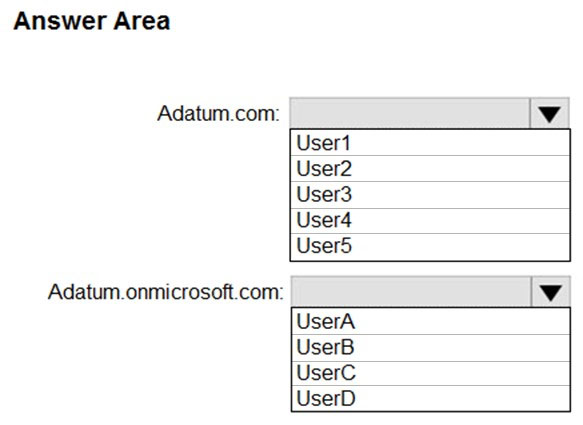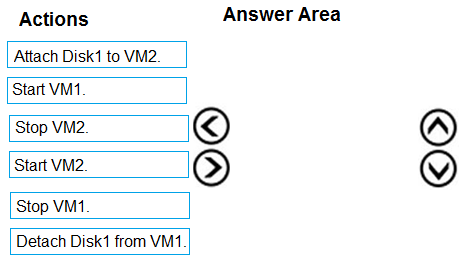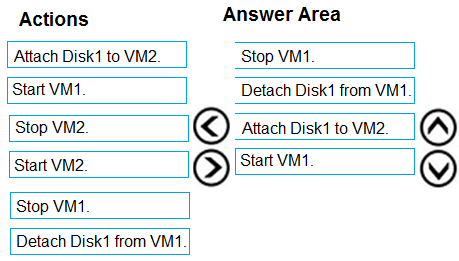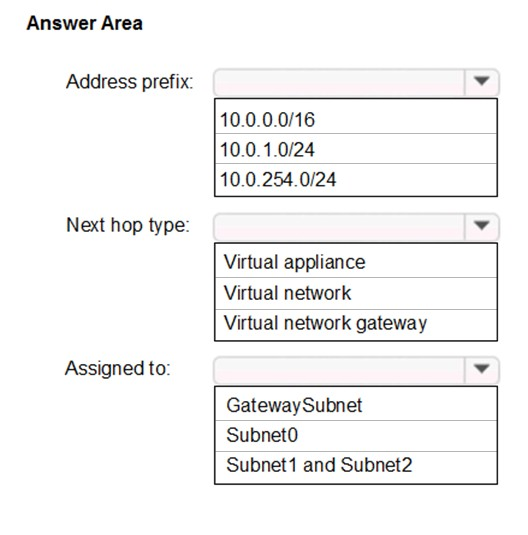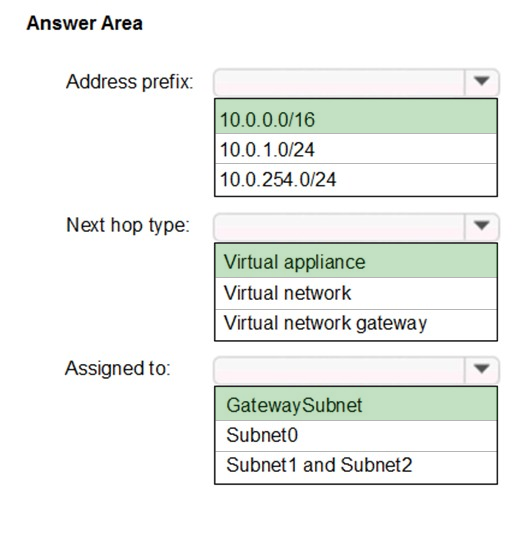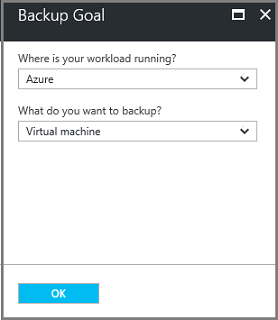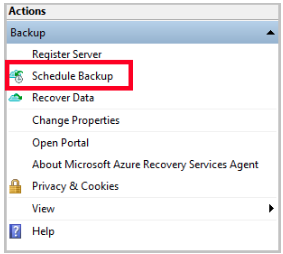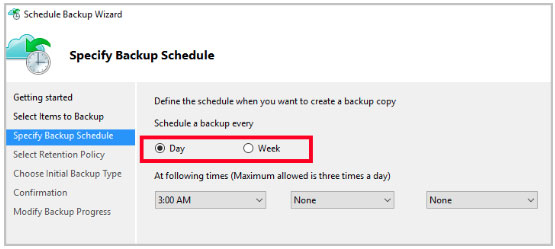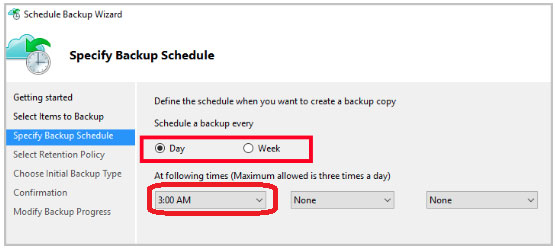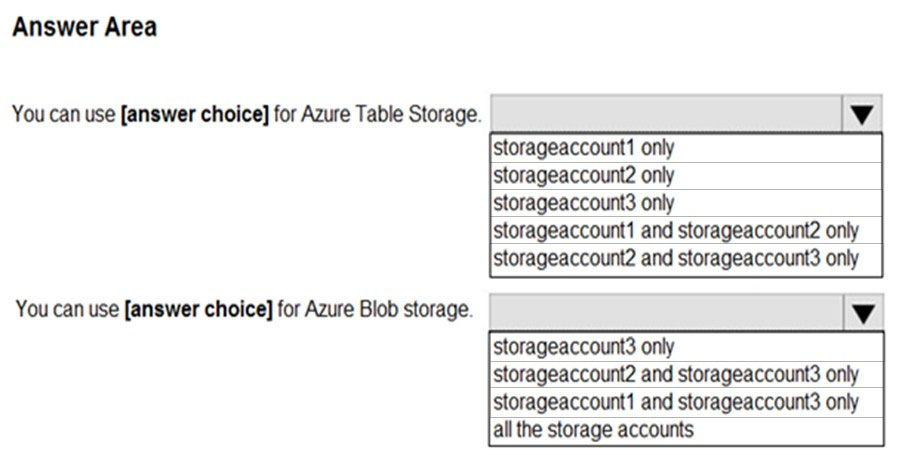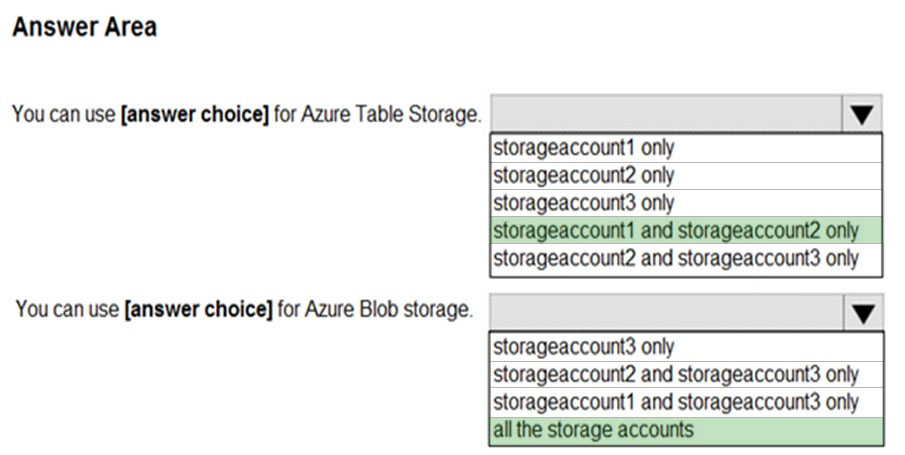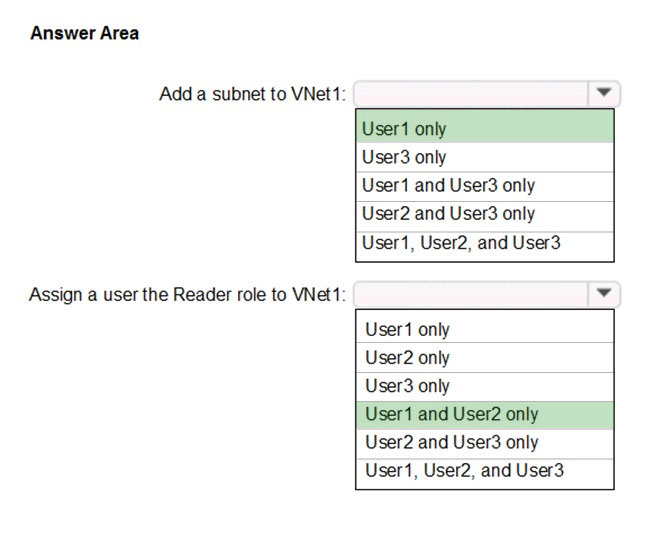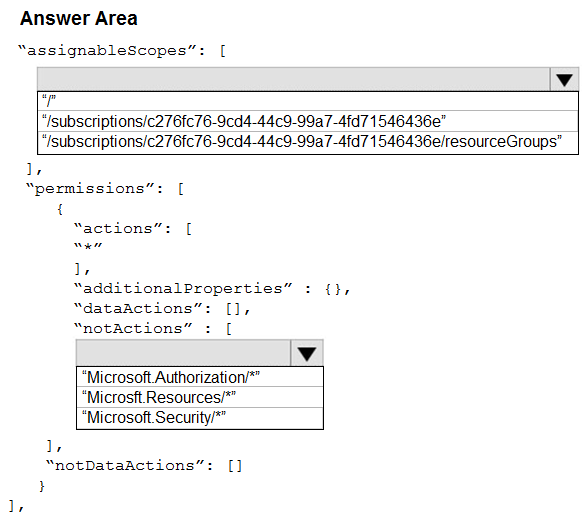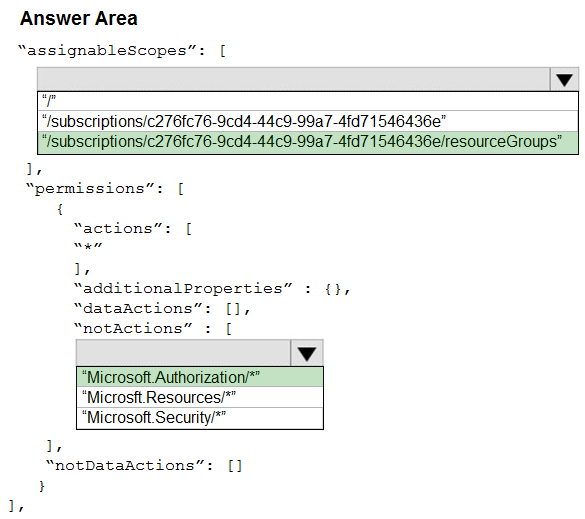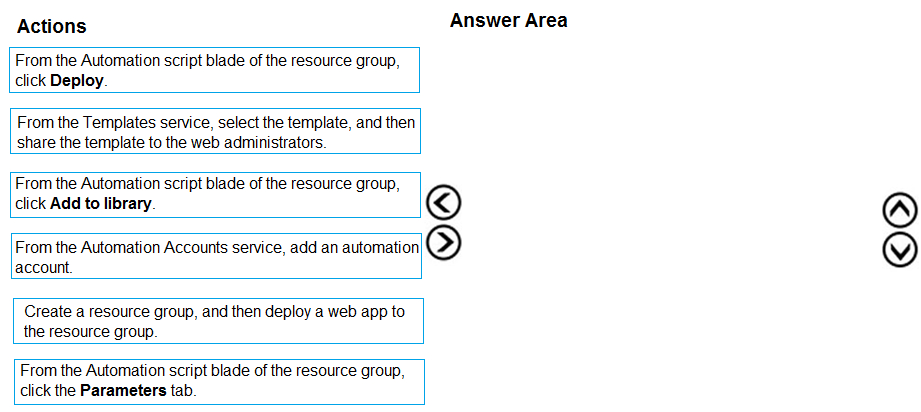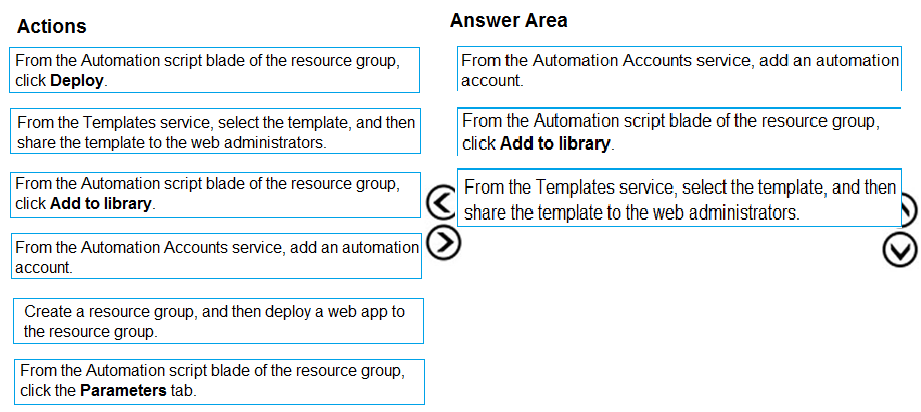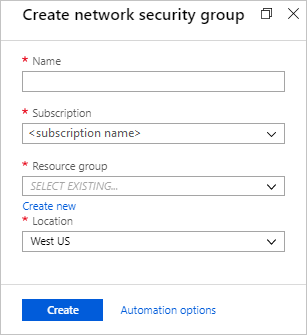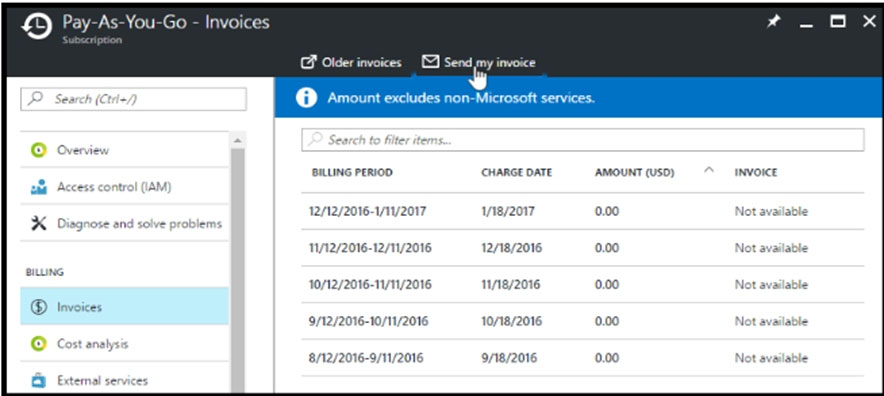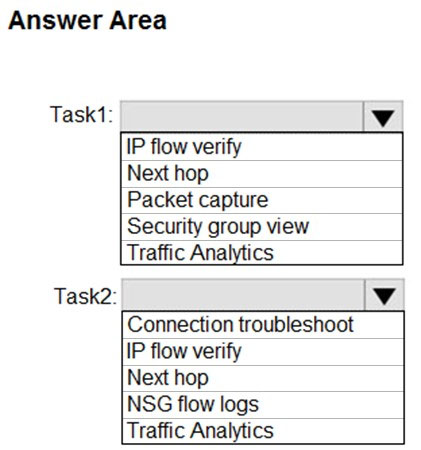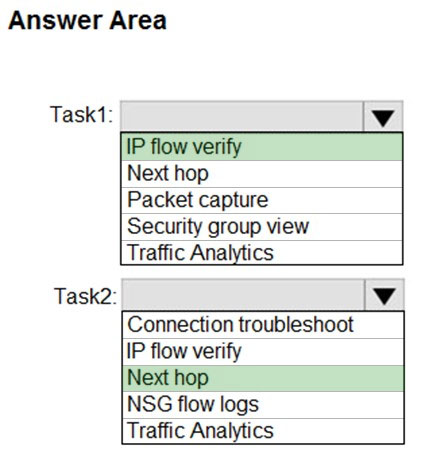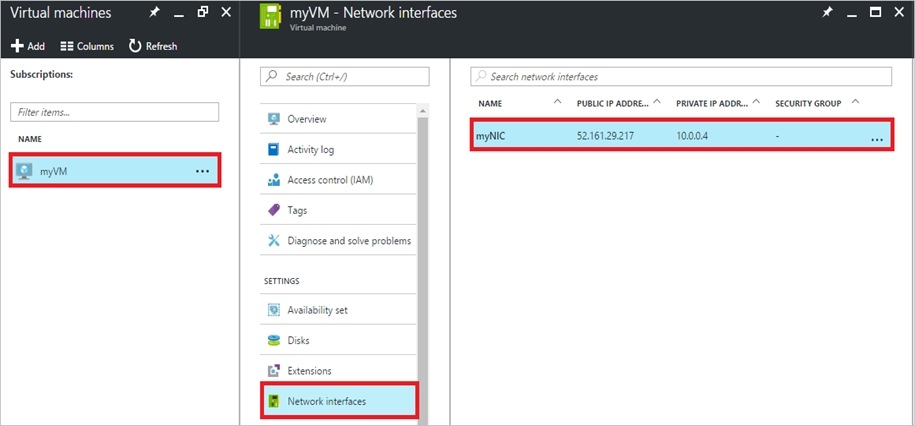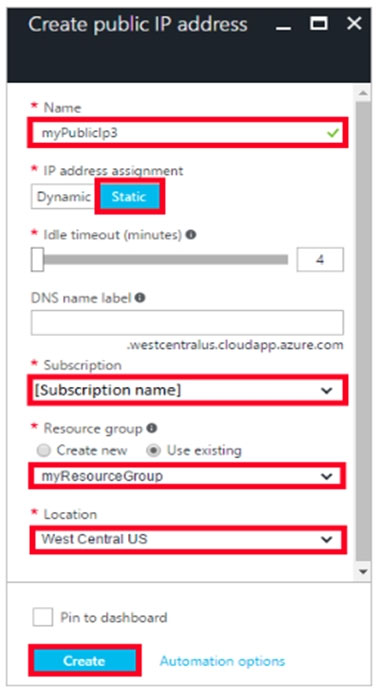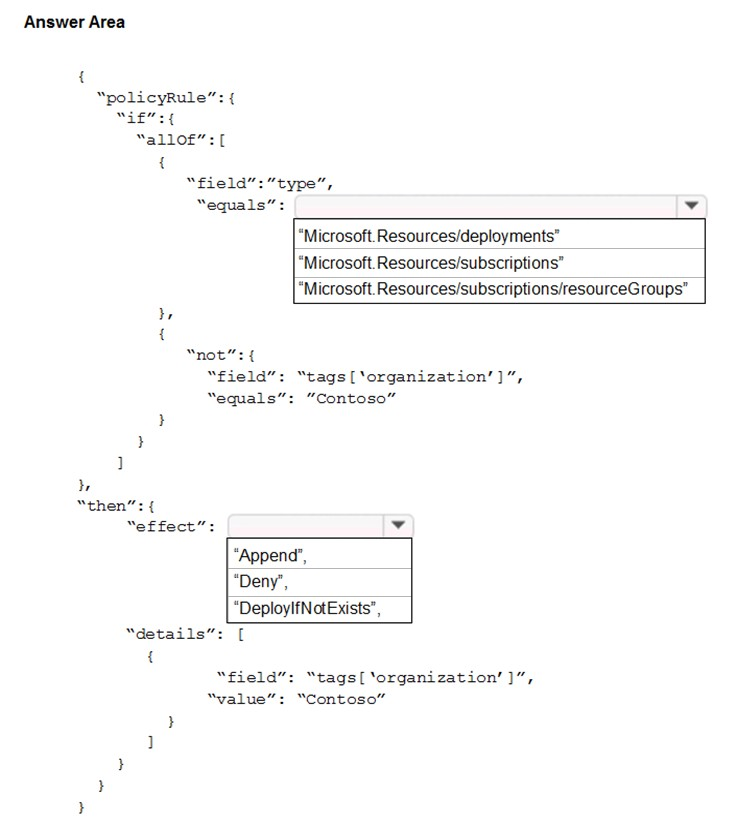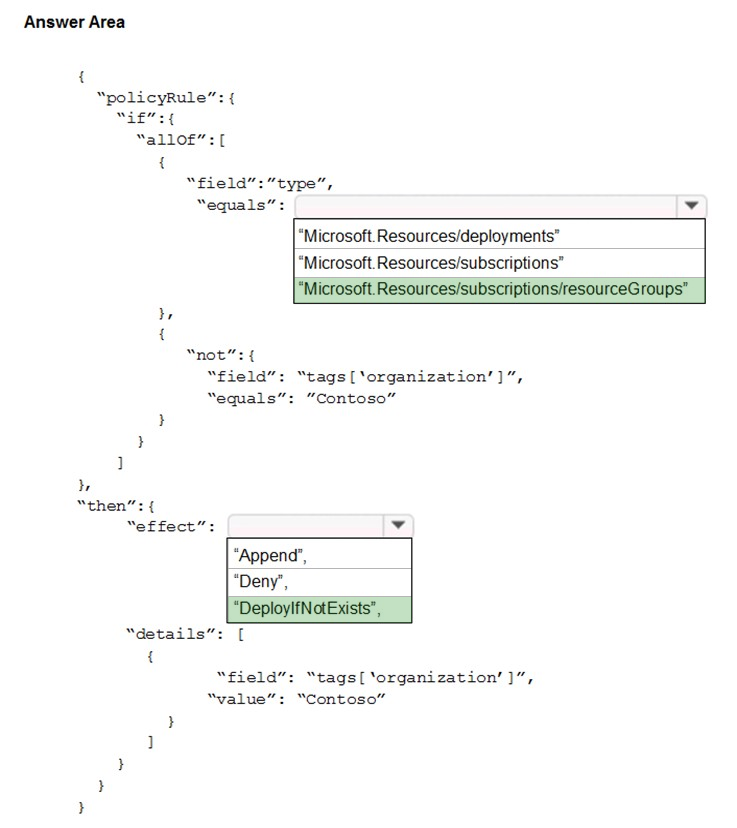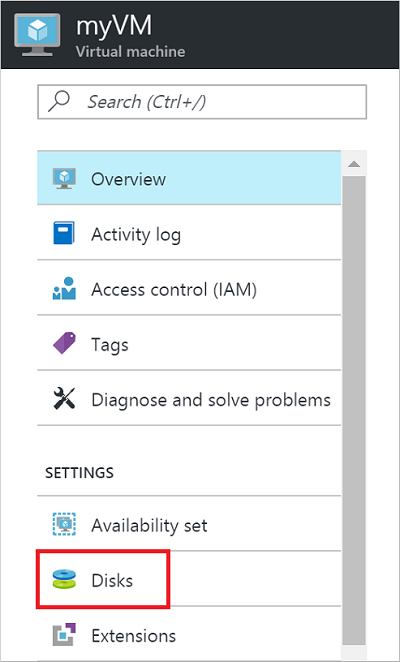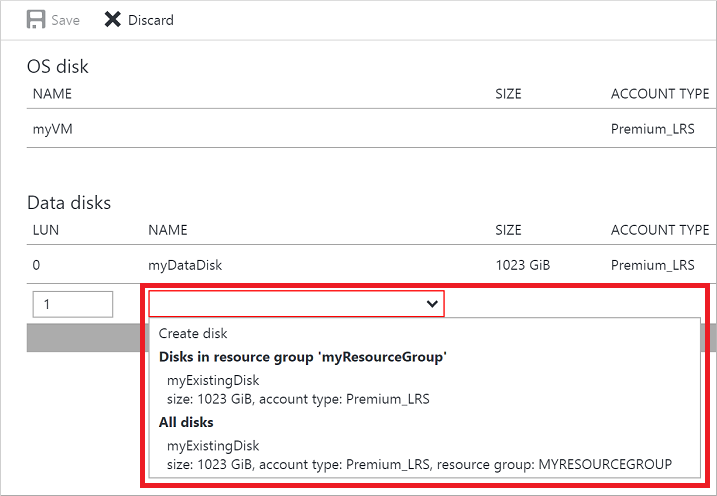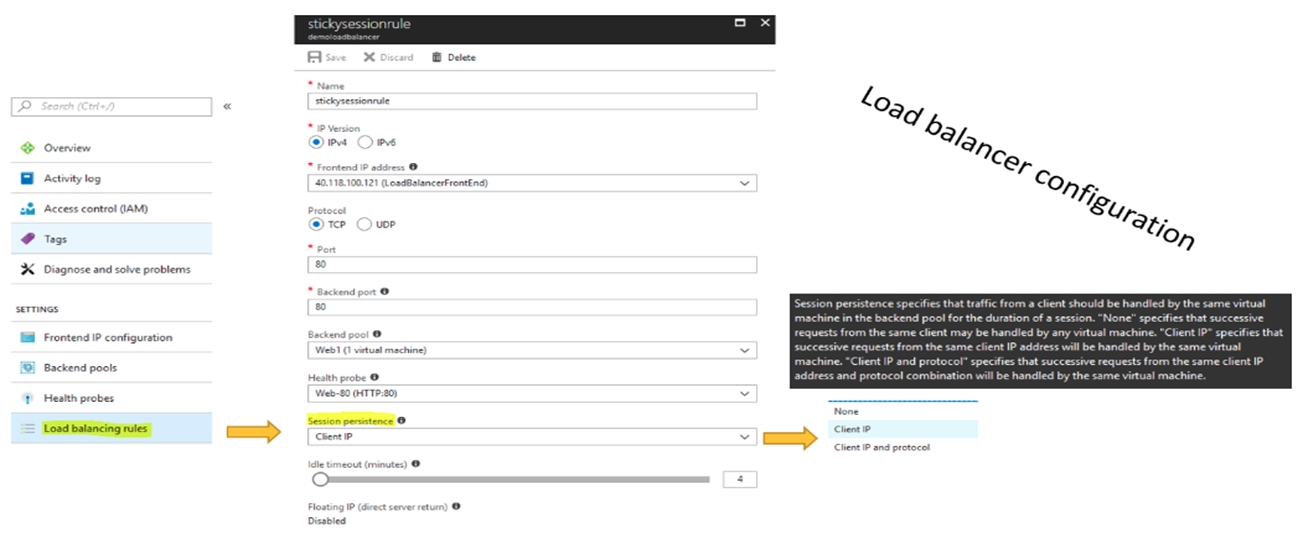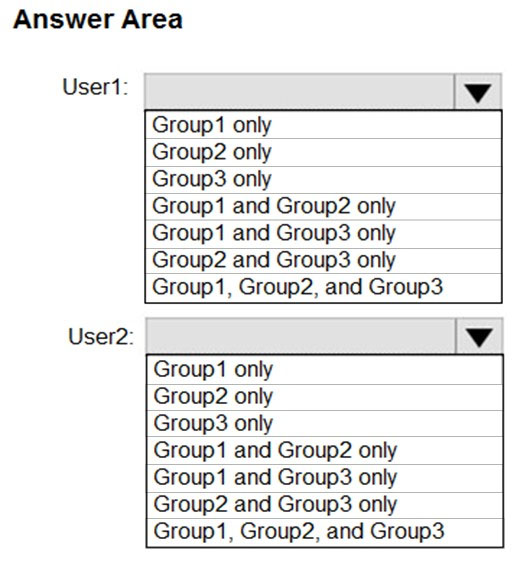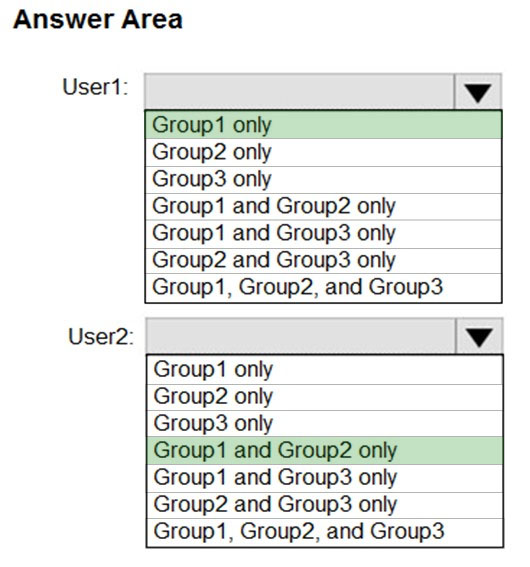AZ-103 Practice Exam Free – 50 Questions to Simulate the Real Exam
Are you getting ready for the AZ-103 certification? Take your preparation to the next level with our AZ-103 Practice Exam Free – a carefully designed set of 50 realistic exam-style questions to help you evaluate your knowledge and boost your confidence.
Using a AZ-103 practice exam free is one of the best ways to:
- Experience the format and difficulty of the real exam
- Identify your strengths and focus on weak areas
- Improve your test-taking speed and accuracy
Below, you will find 50 realistic AZ-103 practice exam free questions covering key exam topics. Each question reflects the structure and challenge of the actual exam.
You have an Azure subscription named Subscription1 that contains an Azure virtual network named VM1. VM1 is in a resource group named RG1. VM1 runs services that will be used to deploy resources to RG1. You need to ensure that a service running on VM1 can manage the resources in RG1 by using the identity of VM1. What should you do first?
A. From the Azure portal, modify the Access control (IAM) settings of RG1.
B. From the Azure portal, modify the Policies settings of RG1.
C. From the Azure portal, modify the Access control (IAM) settings of VM1.
D. From the Azure portal, modify the value of the Managed Service Identity option for VM1.
You have an Azure subscription that contains the following resources: ✑ 100 Azure virtual machines ✑ 20 Azure SQL databases ✑ 50 Azure file shares You need to create a daily backup of all the resources by using Azure Backup. What is the minimum number of backup policies that you must create?
A. 1
B. 2
C. 3
D. 150
E. 170
After you answer a question in this section, you will NOT be able to return to it. As a result, these questions will not appear in the review screen. You have an Azure Active Directory (Azure AD) tenant named Adatum and an Azure Subscription named Subscription1. Adatum contains a group named Developers. Subscription1 contains a resource group named Dev. You need to provide the Developers group with the ability to create Azure logic apps in the Dev resource group. Solution: On Dev, you assign the Contributor role to the Developers group. Does this meet the goal?
A. Yes
B. No
DRAG DROP - You have an Azure subscription that contains two virtual networks named VNet1 and VNet2. Virtual machines connect to the virtual networks. The virtual networks have the address spaces and the subnets configured as shown in the following table.You need to add the address space of 10.33.0.0/16 to VNet1. The solution must ensure that the hosts on VNet1 and VNet2 can communicate. Which three actions should you perform in sequence? To answer, move the appropriate actions from the list of actions to the answer area and arrange them in the correct order. Select and Place:
HOTSPOT - Your network contains an Active Directory domain named adatum.com and an Azure Active Directory (Azure AD) tenant named adatum.onmicorosft.com. Adatum.com contains the user accounts in the following table.Adatum.onmicrosoft.com contains the user accounts in the following table.
You need to implement Azure AD Connect. The solution must follow the principle of least privilege. Which user accounts should you use? To answer, select the appropriate options in the answer area. NOTE: Each correct selection is worth one point. Hot Area:
Your company has an Azure subscription named Subscription1. The company also has two on-premises servers named Server1 and Server2 that run Windows Server 2016. Server1 is configured as a DNS server that has a primary DNS zone named adatum.com. Adatum.com contains 1,000 DNS records. You manage Server1 and Subscription1 from Server2. Server2 has the following tools installed: ✑ The DNS Manager console ✑ Azure PowerShell ✑ Azure CLI 2.0 You need to move the adatum.com zone to Subscription1. The solution must minimize administrative effort. What should you use?
A. the Azure portal
B. the DNS Manager console
C. Azure PowerShell
D. Azure CLI
You have an Azure subscription named Subscription1. Subscription1 contains a virtual machine named VM1. You have a computer named Computer1 that runs Windows 10. Computer1 is connected to the Internet. You add a network interface named Interface1 to VM1 as shown in the exhibit. (Click the Exhibit tab.)From Computer1, you attempt to connect to VM1 by using Remote Desktop, but the connection fails. You need to establish a Remote Desktop connection to VM1. What should you do first?
A. Change the priority of the RDP rule.
B. Attach a network interface.
C. Delete the DenyAllInBound rule.
D. Start VM1.
DRAG DROP - You have two Azure virtual machines named VM1 and VM2. VM1 has a single data disk named Disk1. You need to attach Disk1 to VM2. The solution must minimize downtime for both virtual machines. Which four actions should you perform in sequence? To answer, move the appropriate actions from the list of actions to the answer area and arrange them in the correct order. Select and Place:
You have the Azure virtual networks shown in the following table.To which virtual networks can you establish a peering connection from VNet1?
A. VNet2 and VNet3 only
B. VNet2 only
C. VNet3 and VNet4 only
D. VNet2, VNet3, and VNet4
You need to resolve the licensing issue before you attempt to assign the license again. What should you do?
A. From the Groups blade, invite the user accounts to a new group.
B. From the Profile blade, modify the usage location.
C. From the Directory role blade, modify the directory role.
HOTSPOT - You have an Azure subscription that contains a virtual network named VNet1. VNet1 uses an IP address space of 10.0.0.0/16 and contains the subnets in the following table.Subnet1 contains a virtual appliance named VM1 that operates as a router. You create a routing table named RT1. You need to route all inbound traffic from the VPN gateway to VNet1 through VM1. How should you configure RT1? To answer, select the appropriate options in the answer area. NOTE: Each correct selection is worth one point. Hot Area:
SIMULATION - Please wait while the virtual machine loads. Once loaded, you may proceed to the lab section. This may take a few minutes, and the wait time will not be deducted from your overall test time. When the Next button is available, click it to access the lab section. In this section, you will perform a set of tasks in a live environment. While most functionality will be available to you as it would be in a live environment, some functionality (e.g, copy and paste, ability to navigate to external websites) will not be possible by design. Scoring is based on the outcome of performing the tasks stated in the lab. In other words, it doesn't matter how you accomplish the task, if you successfully perform it, you will earn credit for that task. Labs are not timed separately, and this exam may have more than one lab that you must complete. You can use as much time as you would like to complete each lab. But, you should manage your time appropriately to ensure that you are able to complete the lab(s) and all other sections of the exam in the time provided. Please note that once you submit your work by clicking the Next button within a lab, you will NOT be able to return to the lab. You may now click next to proceed to the lab. Use the following login credentials as needed: Azure Username: XXXXXXX - Azure Password: XXXXXXX - The following information is for technical support purposes only: Lab Instance: 9172796 -You plan to back up all the Azure virtual machines in your Azure subscription at 02:00 Coordinated Universal Time (UTC) daily. You need to prepare the Azure environment to ensure that any new virtual machines can be configured quickly for backup. The solution must ensure that all the daily backups performed at 02:00 UTC are stored for only 90 days. What should you do from your Recovery Services vault on the Azure portal?
HOTSPOT - You are evaluating the name resolution for the virtual machines after the planned implementation of the Azure networking infrastructure. For each of the following statements, select Yes if the statement is true. Otherwise, select No. Hot Area:
HOTSPOT - You have Azure Storage accounts as shown in the following exhibit.Use the drop-down menus to select the answer choice that completes each statement based on the information presented in the graphic. NOTE: Each correct selection is worth one point. Hot Area:
HOTSPOT - You have an Azure subscription named Subscription1 that contains a virtual network named VNet1. You add the users in the following table.Which user can perform each configuration? To answer, select the appropriate options in the answer area. NOTE: Each correct selection is worth one point. Hot Area:
After you answer a question in this section, you will NOT be able to return to it. As a result, these questions will not appear in the review screen. You have an Azure subscription that contains 10 virtual networks. The virtual networks are hosted in separate resource groups. Another administrator plans to create several network security groups (NSGs) in the subscription. You need to ensure that when an NSG is created, it automatically blocks TCP port 8080 between the virtual networks. Solution: You configure a custom policy definition, and then you assign the policy to the subscription. Does this meet the goal?
A. Yes
B. No
You have two Azure virtual machines named VM1 and VM2. You have two Recovery Services vaults named RSV1 and RSV2. VM2 is protected by RSV1. You need to use RSV2 to protect VM2. What should you do first?
A. From the VM2 blade, click Disaster recovery, click Replication settings, and then select RSV2 as the Recovery Services vault.
B. From the RSV2 blade, click Backup. From the Backup blade, select the backup for the virtual machine, and then click Backup.
C. From the RSV1 blade, click Backup Jobs and export the VM2 job.
D. From the RSV1 blade, click Backup items and stop the VM2 backup.
HOTSPOT - You need to identify the storage requirements for Contoso. For each of the following statements, select Yes if the statement is true. Otherwise, select No. NOTE: Each correct selection is worth one point. Hot Area:
You have a public load balancer that balances ports 80 and 443 across three virtual machines. You need to direct all the Remote Desktop Protocol (RDP) connections to VM3 only. What should you configure?
A. an inbound NAT rule
B. a load balancing rule
C. a new public load balancer for VM3
D. a frontend IP configuration
HOTSPOT - You have an Azure subscription named Subscription1 that has a subscription ID of c276fc76-9cd4-44c9-99a7-4fd71546436e. You need to create a custom RBAC role named CR1 that meets the following requirements: ✑ Can be assigned only to the resource groups in Subscription1 ✑ Prevents the management of the access permissions for the resource groups ✑ Allows the viewing, creating, modifying, and deleting of resource within the resource groups What should you specify in the assignable scopes and the permission elements of the definition of CR1? To answer, select the appropriate options in the answer area. NOTE: Each correct selection is worth one point. Hot Area:
You have an Azure Active Directory (Azure AD) tenant. You have an existing Azure AD conditional access policy named Policy1. Policy1 enforces the use of Azure AD-joined devices when members of the Global Administrators group authenticate to Azure AD from untrusted locations. You need to ensure that members of the Global Administrators group will also be forced to use multi-factor authentication when authenticating from untrusted locations. What should you do?
A. From the Azure portal, modify session control of Policy1.
B. From the multi-factor authentication page, modify the user settings.
C. From the Azure portal, modify grant control of Policy1.
D. From the multi-factor authentication page, modify the service settings.
You need to recommend an identity solution that meets the technical requirements. What should you recommend?
A. Pass-through Authentication and single sign-on (SSO)
B. password hash synchronization and single sign-on (SSO)
C. federated single sign-on (SSO) and Active Directory Federation Services (AD FS)
D. cloud-only user accounts
DRAG DROP - You have an on-premises file server named Server1 that runs Windows Server 2016. You have an Azure subscription that contains an Azure file share. You deploy an Azure File Sync Storage Sync Service, and you create a sync group. You need to synchronize files from Server1 to Azure. Which three actions should you perform in sequence? To answer, move the appropriate actions from the list of actions to the answer area and arrange them in the correct order. Select and Place:
HOTSPOT - You have an Azure subscription. You plan to use Azure Resource Manager templates to deploy 50 Azure virtual machines that will be part of the same availability set. You need to ensure that as many virtual machines as possible are available if the fabric fails or during servicing. How should you configure the template? To answer, select the appropriate options in the answer area. NOTE: Each correct selection is worth one point. Hot Area:
You have an Azure virtual machine named VM1 that you use for testing. VM1 is protected by Azure Backup. You delete VM1. You need to remove the backup data stored for VM1. What should you do first?
A. Delete the Recovery Services vault.
B. Delete the storage account.
C. Stop the backup
D. Modify the backup policy.
DRAG DROP - You need to prepare the environment to ensure that the web administrators can deploy the web apps as quickly as possible. Which three actions should you perform in sequence? To answer, move the appropriate actions from the list of actions to the answer area and arrange them in the correct order. Select and Place:
SIMULATION - Please wait while the virtual machine loads. Once loaded, you may proceed to the lab section. This may take a few minutes, and the wait time will not be deducted from your overall test time. When the Next button is available, click it to access the lab section. In this section, you will perform a set of tasks in a live environment. While most functionality will be available to you as it would be in a live environment, some functionality (e.g, copy and paste, ability to navigate to external websites) will not be possible by design. Scoring is based on the outcome of performing the tasks stated in the lab. In other words, it doesn't matter how you accomplish the task, if you successfully perform it, you will earn credit for that task. Labs are not timed separately, and this exam may have more than one lab that you must complete. You can use as much time as you would like to complete each lab. But, you should manage your time appropriately to ensure that you are able to complete the lab(s) and all other sections of the exam in the time provided. Please note that once you submit your work by clicking the Next button within a lab, you will NOT be able to return to the lab. You may now click next to proceed to the lab.
You plan to deploy several Azure virtual machines and to connect them to a virtual network named VNET1007. You need to ensure that future virtual machines on VNET1007 can register their name in an internal DNS zone named corp9172795.com. The zone must NOT be hosted on a virtual machine. What should you do from Azure Cloud Shell? To complete this task, start Azure Cloud Shell and select PowerShell (Linux). Click Show Advanced Settings, and then enter corp9172795n1 in the Storage account text box and File1 in the File share text box. Click Create storage, and then complete the task.
SIMULATION - Please wait while the virtual machine loads. Once loaded, you may proceed to the lab section. This may take a few minutes, and the wait time will not be deducted from your overall test time. When the Next button is available, click it to access the lab section. In this section, you will perform a set of tasks in a live environment. While most functionality will be available to you as it would be in a live environment, some functionality (e.g, copy and paste, ability to navigate to external websites) will not be possible by design. Scoring is based on the outcome of performing the tasks stated in the lab. In other words, it doesn't matter how you accomplish the task, if you successfully perform it, you will earn credit for that task. Labs are not timed separately, and this exam may have more than one lab that you must complete. You can use as much time as you would like to complete each lab. But, you should manage your time appropriately to ensure that you are able to complete the lab(s) and all other sections of the exam in the time provided. Please note that once you submit your work by clicking the Next button within a lab, you will NOT be able to return to the lab. You may now click next to proceed to the lab. Use the following login credentials as needed: Azure Username: XXXXXXX - Azure Password: XXXXXXX - The following information is for technical support purposes only: Lab Instance: 9172796 -You plan to host several secured websites on Web01. You need to allow HTTPS over TCP port 443 to Web01 and to prevent HTTP over TCP port 80 to Web01. What should you do from the Azure portal?
Which blade should you instruct the finance department auditors to use?
A. Cost analysis
B. Resource providers
C. Payment methods
D. Invoices
HOTSPOT - You are evaluating the name resolution for the virtual machines after the planned implementation of the Azure networking infrastructure. For each of the following statements, select Yes if the statement is true. Otherwise, select No. Hot Area:
HOTSPOT - You plan to use Azure Network Watcher to perform the following tasks: ✑ Task1: Identify a security rule that prevents a network packet from reaching an Azure virtual machine. ✑ Task2: Validate outbound connectivity from an Azure virtual machine to an external host. Which feature should you use for each task? To answer, select the appropriate options in the answer area. NOTE: Each correct selection is worth one point. Hot Area:
SIMULATION - Please wait while the virtual machine loads. Once loaded, you may proceed to the lab section. This may take a few minutes, and the wait time will not be deducted from your overall test time. When the Next button is available, click it to access the lab section. In this section, you will perform a set of tasks in a live environment. While most functionality will be available to you as it would be in a live environment, some functionality (e.g, copy and paste, ability to navigate to external websites) will not be possible by design. Scoring is based on the outcome of performing the tasks stated in the lab. In other words, it doesn't matter how you accomplish the task, if you successfully perform it, you will earn credit for that task. Labs are not timed separately, and this exam may have more than one lab that you must complete. You can use as much time as you would like to complete each lab. But, you should manage your time appropriately to ensure that you are able to complete the lab(s) and all other sections of the exam in the time provided. Please note that once you submit your work by clicking the Next button within a lab, you will NOT be able to return to the lab. You may now click next to proceed to the lab. Use the following login credentials as needed: Azure Username: XXXXXXX - Azure Password: XXXXXXX - The following information is for technical support purposes only: Lab Instance: 9172796 -You plan to configure VM1 to be accessible from the Internet. You need to add a public IP address to the network interface used by VM1. What should you do from the Azure portal?
You have an Azure virtual machine named VM1. The network interface for VM1 is configured as shown in the exhibit. (Click the Exhibit tab.)You deploy a web server on VM1, and then create a secure website that is accessible by using the HTTPS protocol. VM1 is used as a web server only. You need to ensure that users can connect to the website from the internet. What should you do?
A. Create a new inbound rule that allows TCP protocol 443 and configure the protocol to have a priority of 501.
B. For Rule5, change the Action to Allow and change the priority to 401.
C. Delete Rule1.
D. Modify the protocol of Rule4.
After you answer a question in this section, you will NOT be able to return to it. As a result, these questions will not appear in the review screen. Your company registers a domain name of contoso.com. You create an Azure DNS zone named contoso.com, and then you add an A record to the zone for a host named www that has an IP address of 131.107.1.10. You discover that Internet hosts are unable to resolve www.contoso.com to the 131.107.1.10 IP address. You need to resolve the name resolution issue. Solution: You add an NS record to the contoso.com Azure DNS zone. Does this meet the goal?
A. Yes
B. No
You discover that VM3 does NOT meet the technical requirements. You need to verify whether the issue relates to the NSGs. What should you use?
A. Diagram in VNet1
B. the security recommendations in Azure Advisor
C. Diagnostic settings in Azure Monitor
D. Diagnose and solve problems in Traffic Manager profiles
E. IP flow verify in Azure Network Watcher
HOTSPOT - You have an Azure subscription. You need to implement a custom policy that meets the following requirements: ✑ Ensures that each new resource group in the subscription has a tag named organization set to a value of Contoso ✑ Ensures that resource groups can be created from the Azure portal ✑ Ensures that compliance reports in the Azure portal are accruable How should you complete the policy? To answer, select the appropriate options in the answer area. NOTE: Each correct selection is worth one point. Hot Area:
SIMULATION - Please wait while the virtual machine loads. Once loaded, you may proceed to the lab section. This may take a few minutes, and the wait time will not be deducted from your overall test time. When the Next button is available, click it to access the lab section. In this section, you will perform a set of tasks in a live environment. While most functionality will be available to you as it would be in a live environment, some functionality (e.g, copy and paste, ability to navigate to external websites) will not be possible by design. Scoring is based on the outcome of performing the tasks stated in the lab. In other words, it doesn't matter how you accomplish the task, if you successfully perform it, you will earn credit for that task. Labs are not timed separately, and this exam may have more than one lab that you must complete. You can use as much time as you would like to complete each lab. But, you should manage your time appropriately to ensure that you are able to complete the lab(s) and all other sections of the exam in the time provided. Please note that once you submit your work by clicking the Next button within a lab, you will NOT be able to return to the lab. You may now click next to proceed to the lab. Use the following login credentials as needed: Azure Username: XXXXXXX - Azure Password: XXXXXXX - The following information is for technical support purposes only: Lab Instance: 9172796 -You recently created a virtual machine named Web01. You need to attach a new 80-GB standard SSD data disk named Web01-Disk1 to Web01. What should you do from the Azure portal?
You download an Azure Resource Manager template based on an existing virtual machine. The template will be used to deploy 100 virtual machines. You need to modify the template to reference an administrative password. You must prevent the password from being stored in plain text. What should you create to store the password?
A. an Azure Key Vault and an access policy
B. a Recovery Services vault and a backup policy
C. Azure Active Directory (AD) Identity Protection and an Azure policy
D. an Azure Storage account and an access policy
You need to recommend a solution to automate the configuration for the finance department users. The solution must meet the technical requirements. What should you include in the recommendation?
A. Azure AD B2C
B. Azure AD Identity Protection
C. an Azure logic app and the Microsoft Identity Management (MIM) client
D. dynamic groups and conditional access policies
DRAG DROP - You have an on-premises file server named Server1 that runs Windows Server 2016. You have an Azure subscription that contains an Azure file share. You deploy an Azure File Sync Storage Sync Service, and you create a sync group. You need to synchronize files from Server1 to Azure. Which three actions should you perform in sequence? To answer, move the appropriate actions from the list of actions to the answer area and arrange them in the correct order. Select and Place:
You set the multi-factor authentication status for a user named admin1@contoso.com to Enabled. Admin1 accesses the Azure portal by using a web browser. Which additional security verifications can Admin1 use when accessing the Azure portal?
A. a phone call, a text message that contains a verification code, and a notification or a verification code sent from the Microsoft Authenticator app
B. an app password, a text message that contains a verification code, and a notification sent from the Microsoft Authenticator app
C. an app password, a text message that contains a verification code, and a verification code sent from the Microsoft Authenticator app
D. a phone call, an email message that contains a verification code, and a text message that contains an app password
You have five Azure virtual machines that run Windows Server 2016. The virtual machines are configured as web servers. You have an Azure load balancer named LB1 that provides load balancing services for the virtual machines. You need to ensure that visitors are serviced by the same web server for each request. What should you configure?
A. Idle Time-out (minutes) to 20
B. Floating IP (direct server return) to Disabled
C. Floating IP (direct server return) to Enabled
D. Session persistence to Client IP and protocol
E. a health probe
HOTSPOT - You have an Azure subscription named Subscription1 that has a subscription ID of c276fc76-9cd4-44c9-99a7-4fd71546436e. You need to create a custom RBAC role named CR1 that meets the following requirements: ✑ Can be assigned only to the resource groups in Subscription1 ✑ Prevents the management of the access permissions for the resource groups ✑ Allows the viewing, creating, modifying, and deleting of resource within the resource groups What should you specify in the assignable scopes and the permission elements of the definition of CR1? To answer, select the appropriate options in the answer area. NOTE: Each correct selection is worth one point. Hot Area:
You have an Azure subscription that contains a virtual network named VNet1. VNet1 contains four subnets named Gateway, Perimeter, NVA, and Production. The NVA subnet contains two network virtual appliances (NVAs) that will perform network traffic inspection between the Perimeter subnet and the Production subnet. You need to implement an Azure load balancer for the NVAs. The solution must meet the following requirements: ✑ The NVAs must run in an active-active configuration that uses automatic failover. ✑ The NVAs must load balance traffic to two services on the Production subnet. The services have different IP addresses. Which three actions should you perform? Each correct answer presents part of the solution. NOTE: Each correct selection is worth one point.
A. Add two load balancing rules that have HA Ports enabled and Floating IP disabled.
B. Add a frontend IP configuration, two backend pools, and a health probe.
C. Add two load balancing rules that have HA Ports and Floating IP enabled.
D. Deploy a standard load balancer.
E. Deploy a basic load balancer.
F. Add a frontend IP configuration a backend pool, and a health probe.
You have an Azure subscription that contains the resources in the following table.To which subnets can you apply NSG1?
A. the subnets on VNet2 only
B. the subnets on VNet2 and VNet3 only
C. the subnets on VNet1, VNet2, and VNet3
D. the subnets on VNet1 only
E. the subnets on VNet3 only
After you answer a question in this section, you will NOT be able to return to it. As a result, these questions will not appear in the review screen. Your company registers a domain name of contoso.com. You create an Azure DNS zone named contoso.com, and then you add an A record to the zone for a host named www that has an IP address of 131.107.1.10. You discover that Internet hosts are unable to resolve www.contoso.com to the 131.107.1.10 IP address. You need to resolve the name resolution issue. Solution: You modify the name servers at the domain registrar. Does this meet the goal?
A. Yes
B. No
You have an Azure subscription that contains an Azure Active Directory (Azure AD) tenant named adatum.com. The tenant contains 500 user accounts. You deploy Microsoft Office 365. You configure Office 365 to use the user accounts in adatum.com. You configure 60 users to connect to mailboxes in Microsoft Exchange Online. You need to ensure that the 60 users use Azure Multi-Factor Authentication (MFA) to connect to the Exchange Online mailboxes. The solution must only affect connections to the Exchange Online mailboxes. What should you do?
A. From the multi-factor authentication page, configure the Multi-Factor Auth status for each user
B. From Azure Active Directory admin center, create a conditional access policy
C. From the multi-factor authentication page, modify the verification options
D. From the Azure Active Directory admin center, configure an authentication method
You have an Azure Active Directory (Azure AD) tenant named contoso.com. Multi-factor authentication (MFA) is enabled for all users. You need to provide users with the ability to bypass MFA for 10 days on devices to which they have successfully signed in by using MFA. What should you do?
A. From the multi-factor authentication page, configure the users’ settings.
B. From Azure AD, create a conditional access policy.
C. From the multi-factor authentication page, configure the service settings.
D. From the MFA blade in Azure AD, configure the MFA Server settings.
HOTSPOT - You have an Azure Active Directory (Azure AD) tenant named adatum.com. Adatum.com contains the groups in the following table:You create two user accounts that are configured as shown in the following table.
To which groups do User1 and User2 belong? To answer, select the appropriate options in the answer area. NOTE: Each correct selection is worth one point. Hot Area:
You have an Azure virtual machine named VM1 that runs Windows Server 2019. You save VM1 as a template named Template1 to the Azure Resource Manager library. You plan to deploy a virtual machine named VM2 from Template1. What can you configure during the deployment of VM2?
A. virtual machine size
B. operating system
C. administrator username
D. resource group
Free Access Full AZ-103 Practice Exam Free
Looking for additional practice? Click here to access a full set of AZ-103 practice exam free questions and continue building your skills across all exam domains.
Our question sets are updated regularly to ensure they stay aligned with the latest exam objectives—so be sure to visit often!
Good luck with your AZ-103 certification journey!


